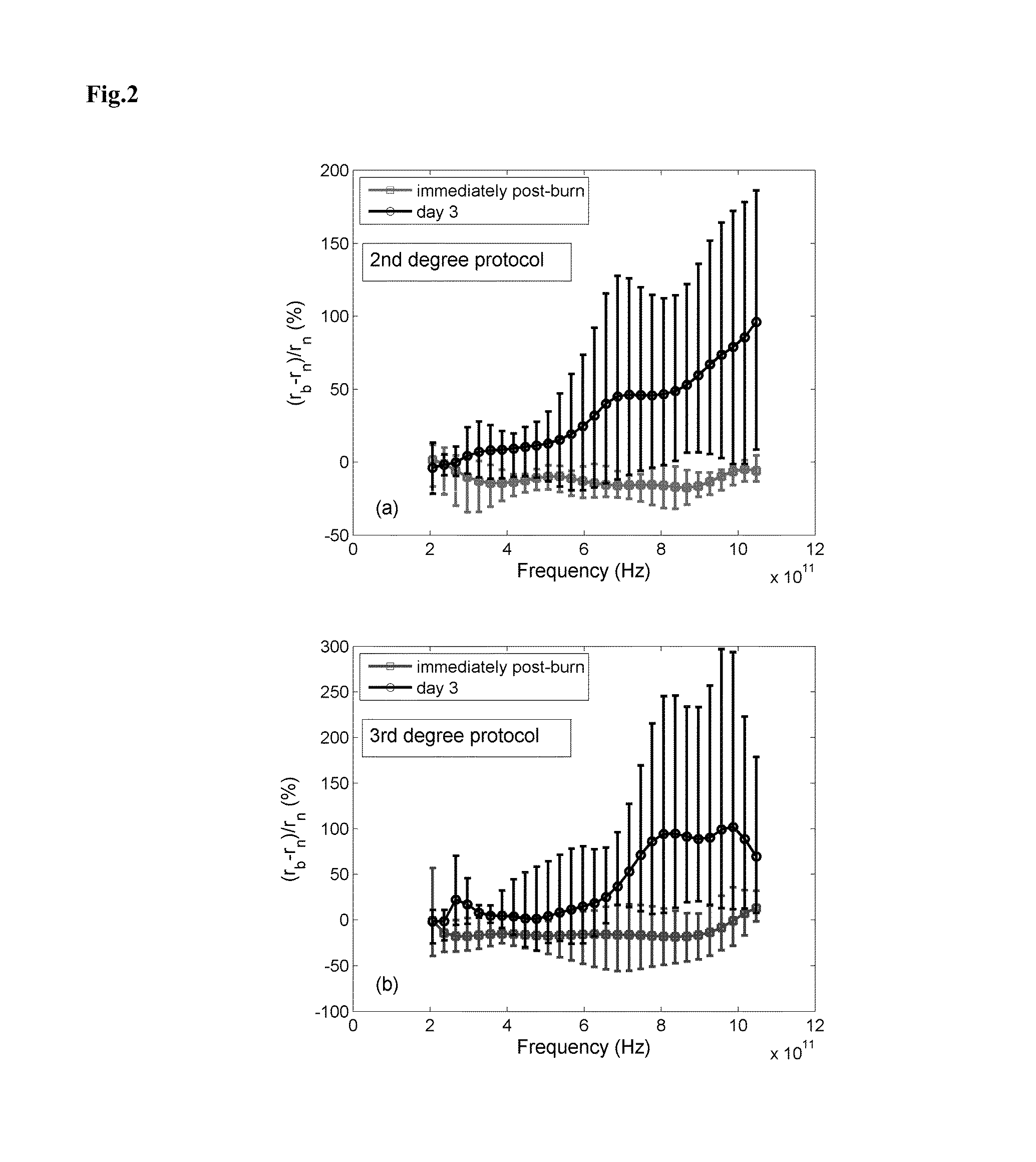Methods and systems for assessing a burn injury
a technology of burn injury and method, applied in the field of methods and systems for assessing burn injury, can solve the problems of complex nature of partial thickness burn, slow desiccation of remaining viable parts of the dermis layer, and 3sup>rd /sup>degree injury level
- Summary
- Abstract
- Description
- Claims
- Application Information
AI Technical Summary
Benefits of technology
Problems solved by technology
Method used
Image
Examples
examples
[0131]A diagnosis criterion is proposed for non-invasive grading of burn injuries using terahertz radiation. Experimental results are presented from in vivo terahertz time-domain spectroscopy of 2nd and 3rd degree wounds, obtained in a 72-hours animal study. During this period, the change in the spectroscopic response of the burned tissue is studied. It is shown that terahertz waves are sensitive to not only the post burn formation of interstitial edema, but also to the density of skin structures. Based on these results, it is proposed that the combination of these two effects, as probed by terahertz spectroscopy of the tissue, may be used to differentiate partial-thickness burns that will naturally heal from those that will require surgical intervention.
[0132]With over one million burn injuries receiving medical treatment each year in the U.S., the social and economic costs, including recovery and reintegration burden, of burn survivors far exceed those of other injuries1-2. Charac...
PUM
| Property | Measurement | Unit |
|---|---|---|
| frequencies | aaaaa | aaaaa |
| frequencies | aaaaa | aaaaa |
| frequencies | aaaaa | aaaaa |
Abstract
Description
Claims
Application Information
 Login to View More
Login to View More - R&D
- Intellectual Property
- Life Sciences
- Materials
- Tech Scout
- Unparalleled Data Quality
- Higher Quality Content
- 60% Fewer Hallucinations
Browse by: Latest US Patents, China's latest patents, Technical Efficacy Thesaurus, Application Domain, Technology Topic, Popular Technical Reports.
© 2025 PatSnap. All rights reserved.Legal|Privacy policy|Modern Slavery Act Transparency Statement|Sitemap|About US| Contact US: help@patsnap.com



